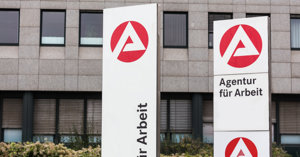
Germany’s €100B State Fund Faces Fierce Debate
Germany’s €100B infrastructure plan fuels disputes over spending priorities, growth impact, and state autonomy.
A pothole on a German road highlights the country’s infrastructure backlog, which policymakers aim to fix with a new debt-funded investment program.
Germany’s federal government is embarking on an unprecedented €500 billion ($536 billion) infrastructure initiative, financed entirely by new debt, to modernize the country and boost its ailing economy. The plan — one of the largest investment packages in Germany’s history — was enabled by a March 2025 constitutional amendment, creating a “special fund” outside the regular budget bundesregierung.de. The fund’s goal is to repair roads and bridges, upgrade railways, expand digital networks, and help achieve climate neutrality by 2045 bundesregierung.de. Now, as Parliament begins debating the details of how to spend the money, a contentious question looms: Will this massive spending serve as a much-needed growth stimulus or fizzle out with little effect?
Hopes for Local Infrastructure and Economy
Expectations are high among local governments and businesses. Of the half-trillion euro program, €100 billion is earmarked for Germany’s 16 states (Länder) and their municipalities bundesregierung.de. Many city and town councils hope this debt-financed windfall will finally jump-start long-delayed projects in their communities – from fixing local roads and bridges to renovating schools and public buildings. Likewise, companies in construction, engineering and IT services anticipate a surge of new contracts for highway upgrades, school refurbishments and digital infrastructure projects if the money flows as intended. The special fund is structured to be spent over a 12-year period, ensuring a “modernization push for the whole country,” according to the government bundesregierung.de. Officials say the investments are urgently needed to secure future prosperity and strengthen Germany’s competitiveness through growth bundesregierung.de.
Niklas Potrafke of Munich’s Ifo Institute describes the initiative as a real opportunity for the economy — provided the money finances genuinely new projects. “The chance lies in being able to fund plans now that wouldn’t have existed without this special fund,” he told ARD’s capital city studio, giving the example of a new road that otherwise might never be built. Such investments, he noted, could provide a tangible boost to economic growth. But Potrafke cautions that clear priorities are essential. Funding “theaters or sports facilities would be nice, but in times of economic stagnation that would be the wrong priority,” he warned bi-medien.de. In other words, the stimulus effect will only materialize if the money goes into high-impact infrastructure projects – not just feel-good local amenities – especially while the economy is sluggish.
Economists and Auditors Raise Doubts
Despite the optimism in many quarters, experts are voicing doubts about whether the €100 billion for states and municipalities will, in practice, deliver the promised economic upswing. Potrafke and others point out a fundamental risk: the new funds might simply be used to pay for projects that were already planned – yielding little to no additional growth bi-medien.de. In fact, a requirement that the money only fund “additional” investments (beyond existing plans) was present in early drafts of the law but was later dropped bi-medien.de. “This creates a big danger that the money will be misdirected and the growth impulse will fizzle out,” Potrafke warns bi-medien.de. If states just substitute federal money for their own spending, using the freed-up funds elsewhere (for example, to plug budget holes or expand social programs), the infrastructure push could turn into what he calls a “debt-financed expansion of the welfare state” – with no net gain for roads, rail or other infrastructure bi-medien.de. Such an outcome would defeat the purpose of the special fund and undermine its impact on competitiveness in the long run bi-medien.de.
Germany’s Federal Court of Auditors (Bundesrechnungshof) has been even more blunt. In a report earlier this week, the independent audit authority blasted the draft legislation as “substanceless” in terms of ensuring overall effectiveness spiegel.de. The auditors criticized the lack of safeguards to guarantee the money actually produces new infrastructure and growth. Key stipulations were removed, they noted, including rules that would have limited the funds to additional projects not already in the pipeline spiegel.de. Moreover, the federal government gave up “essential levers” for success: Berlin cannot stop state-level plans it deems uneconomical, nor can it claw back funds if investments aren’t durable, and there is no provision for systematic success monitoring spiegel.de. “Without clear rules, the package is at risk of not leading to more or better infrastructure in the states,” the auditors warned, saying the bill in its current form is “with regard to the nationwide objectives, substanceless” spiegel.de spiegel.de. They urged Parliament to tighten the law to ensure the €100 billion is used only for additional, “economically sound, sustainable and targeted” investments spiegel.de. Otherwise, the auditors cautioned, Germany might not achieve the intended goal of overcoming its infrastructure backlog and spurring growth spiegel.de.
Political Debate Over Spending Rules
These warnings have fueled a political debate as the Bundestag (Germany’s parliament) takes up the legislation setting the rules for the states’ €100 billion share. Notably, the environmentalist Green Party – which is now in opposition – echoes the auditors’ concerns. Green lawmaker Sebastian Schäfer argues the bill, put forward by the governing coalition of conservatives (CDU/CSU) and Social Democrats (SPD), fails to require true “additionality.” He calls for amendments to make sure the money isn’t just offsetting existing plans, and to set binding quotas for how much of the funds must reach municipalities (as opposed to being spent at the state level) spiegel.de. “The opportunity here is huge – to invest in our future and also generate growth and cohesion,” Schäfer says, “but the money has to be used wisely.” He wants Parliament to fix the bill so that it truly directs fresh investment to future-proof, growth-enhancing projects rather than dissipating across ordinary budgets.
Ironically, the Greens helped pave the way for this special fund in the first place. Back in March, the Greens voted with the former governing parties (SPD and CDU/CSU) to achieve the two-thirds supermajority needed for the constitutional amendment enabling the debt-funded program. (The approval of the Bundesrat, representing state governments, was also secured.) In those negotiations, however, the Länder won significant freedom in using their share of the money. The generous €100 billion allotment for states was a concession to get their consent spiegel.de, and state leaders pushed for a “slim, unbureaucratic” framework with minimal strings attached. As Saxony-Anhalt’s Minister-President Reiner Haseloff (CDU) put it, strict rules from Berlin would only “work against the goal of investing quickly.” The federal government largely acquiesced, offering wide leeway to each state on how to deploy the funds spiegel.de. This flexibility is now at the heart of the controversy: it was intended to expedite investments, but it also raises the prospect of misuse or dilution of the program’s impact.
States Plan Projects and Share Funds
Many of Germany’s 16 states have already sketched out how they intend to spend their portions of the infrastructure fund – even as the federal law is being finalized. In most cases, state governments plan to pass down a significant share of the money to cash-strapped municipalities. Commonly, about 60% of each state’s allocation will flow to city and county authorities, with the state retaining 40% for its own projects. For example, Mecklenburg-Western Pomerania (a smaller, economically weaker state in the northeast) expects about €1.9 billion from the fund and has decided to use roughly €100 million for a program to build seven new local police stations across the state regierung-mv.de – a boost to public safety infrastructure. In the Saarland (southwest Germany), which will receive around €1.2 billion, the state government and local councils jointly devised a plan to direct 10% of the funds into a “swimming pools program” to renovate municipal pools, with costs split 50–50 between the state and communities saarland.de. Such projects aim to address long-neglected facilities that improve quality of life, although critics might question their immediate growth impact.
The distribution of the €100 billion pot among states is based on a formula weighing population and economic indicators. Under the proposed key, the most populous state, North Rhine-Westphalia (home to nearly 18 million people and major industries), stands to receive the largest share – about 21% of the total, or roughly €21 billion. Bavaria and Baden-Württemberg, both wealthy southern states, would get the next-biggest slices (around 15.7% and 13.2%, respectively). At the lower end, small states will get much more modest amounts: Mecklenburg-Western Pomerania, for instance, is slated for about 1.9% of the funds, and the smallest share goes to the city-state of Bremen at under 1% saarland.de regierung-mv.de. These allocations, once approved, will set each state’s spending envelope through 2036. Notably, even the smallest allotment (Bremen’s) is nearly €900 million – a significant sum for a city of just 680,000 people – underscoring the sheer scale of this federal investment push.
Next Steps and Outlook
Before any money can be spent, the national parliament must pass the “Länder-und-Kommunal-Infrastrukturfinanzierungsgesetz” – the law detailing how the €100 billion for states and municipalities will be distributed and used. The Bundestag’s budget committee has been scrutinizing the bill, and lawmakers are expected to vote on it in the coming weeks. If approved, the funding could start flowing as early as January 2025, retroactively authorized from the start of the year bundesregierung.de. States would then have up to twelve years to commit the funds to projects, with final expenditures possible into the late 2030s. In many municipalities, plans are ready and waiting: local officials say they have “shovel-ready” infrastructure projects that have been stalled for lack of funding, which could be kick-started by an infusion of federal money.
What remains to be seen is whether the final legislation will incorporate stricter guidelines to ensure the special fund fulfills its promise. Auditors and economists are urging measures like mandatory additionality, rigorous oversight, and mid-term evaluations to track results spiegel.de spiegel.de. The government insists it will use the new debt “prudently” and focus every euro on improving infrastructure and fostering growth bundesregierung.de bundesregierung.de. But given Germany’s past struggles with sluggish project rollouts and bureaucratic hurdles, turning a half-trillion euros of borrowed money into tangible economic gains is a daunting challenge.
For now, hopes are high but so is skepticism. The infrastructure fund represents a historic opportunity to upgrade Germany’s public capital stock and stimulate its economy out of stagnation. Whether it becomes a true growth stimulus or ends up ineffective will depend on the fine print being hashed out now – and on disciplined execution in the years ahead. Policymakers face the delicate task of balancing speed and flexibility with accountability and impact. The stakes are enormous: future generations will inherit the debt, so they are counting on a legacy of better infrastructure and stronger growth in return.
Sources: German Federal Government press release bundesregierung.de; Ifo Institute analysis bi-medien.de; DER SPIEGEL spiegel.de; State of Mecklenburg-Vorpommern regierung-mv.de; State Chancellery of Saarland saarland.de.






